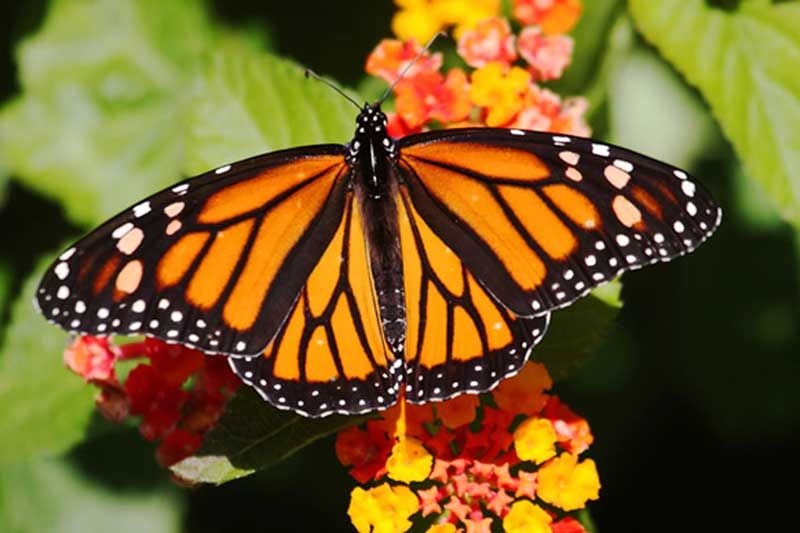May 22, 2014
by Lorraine Julien
As you may know, Monarch butterfly numbers are at an all-time low. Monarch populations reached a peak in 1996 when there were nearly a billion Monarchs spanning over nearly 45 acres of forest in Mexico’s Monarch sanctuaries where they winter. The current population is down to about 35 million according to the World Wildlife Fund – Mexico. The numbers are down so low that now only three acres of forest are needed for their winter sanctuary.
Extreme weather (heat, drought, cold and wet) has mostly affected them over the past two years. They must also deal with vanishing habitats and the increased presence of GMO crops, which are known to wipe out milkweed, their only host plant. Hundreds of years of farming practices didn’t really affect the Monarch populations but, after 10 years of GMO farming, the affects are alarming. Farmers no longer till weeds but, instead spray the fields with Roundup. Pesticide exposure is also killing honeybees.
There is a conservation plan – the North American Monarch Conservation Plan, which focuses on habitat protection, restoration and enhancement, increasing milkweed on public and private lands as well as informing the public about Monarch conservation efforts.
What can we do? - There are many ways that we can help in our own backyards, and make our properties more attractive at the same time. It’s fairly simple to create a butterfly garden. You may have some ideas of your own or perhaps some of the following ideas may help to make your garden a haven for butterflies:
-
Plant flowers that bloom all summer long to attract butterflies and other pollinators. There are many flowering plants and shrubs that will attract butterflies, bees and hummingbirds. Following is a sampling of some well known varieties that are easy to grow: aster, black-eyed susan, purple coneflower, phlox, butterfly bush, lavender, lilac, lupine, pansy, shasta daisy, snapdragon, hollyhock – just to name a few. Day lilies, goldenrod and, particularly, milkweed are just a few of the many wild, native plants that attract these pollinators.
-
Milkweed is essential for the survival of the Monarchs as their eggs are laid only on the milkweed plant. The caterpillars that evolve rely entirely on the milkweed plant for their food.
-
Butterflies, bees and hummingbirds rely on flower nectar all summer to provide them with food.
-
Flat stones, particularly in sunny, sheltered spots provide a place to bask and rest in the sun
-
If you have room, a bird bath or small pond can provide water for all pollinators and attract birds at the same time
-
Avoid using pesticides but, if you must, read instructions carefully and avoid spraying when windy or when rain is forecast (to avoid runoff). Also avoid spraying for mosquitoes or other biting insects when Monarchs are present.
-
Avoid pest problems by burying infested plant residues, removing pest habitat and by planting disease and pest resistant plants
You can help build community support by sharing information about Monarch conservation with your friends, family and neighbours. Explain how they can help by planting butterfly gardens and habitat.
By doing what you can to help the Monarch, you will also assist in making our small part of the planet more beautiful. Birds and butterflies are like flowers on the wing. Their presence brings a beauty to the garden that nothing else can match.
Send your observations to Steve Blight at This email address is being protected from spambots. You need JavaScript enabled to view it. or Lorraine Julien, This email address is being protected from spambots. You need JavaScript enabled to view it.
More Stories
- Province clarifies stance - Says Private Well Water Testing Will Continue
- Frontenac County Stays Internal for CAO - Appoints Kevin Farrell
- Addington Highlands Tax Bill Going Up 6.93%
- Perth Road United Church Donation to The Grace Centre
- 21 Years Of Dump Life Left At South Frontenac Waste Site
- Eclipse 2024 – Once In A Lifetime
- National Tourism Week
- NeLL Spring Open House and Anniversary Concert
- 25 years at Bishop Lake Outdoor Centre
- Grounds Contracts Down, Custodial Contracts Up In Central Frontenac

